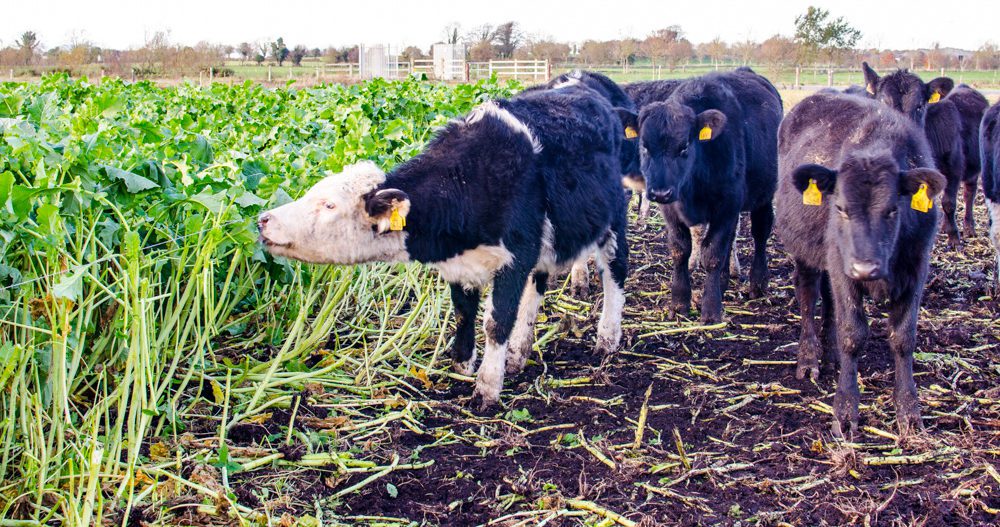After the summer that’s just been, many farmers have grown and will graze forage crops for the first time this year.
However, before livestock are introduced to such crops, there are a number of factors to take into consideration.
It’s worth remembering that there are risks associated with these crops; if animals were to gorge themselves, issues with bloat or nitrate poising could arise.
Good management of these crops – whether they be kale, rape or hybrids – is key for achieving the best results over the winter months. Being prepared is critical to success when it comes to grazing these crops.
One of the first steps farmers should take before grazing forage crops is to measure how much of the crop is available. This can be achieved by taking a quadrant cut from the paddock and weighing the resulting sample.
From the results, farmers will be able to judge the daily forage crop allowance, whilst also allowing them to budget how many days grazing the crop will provide.
Sample weight (2kg) X number of quadrants per hectare (40,000) X dry matter of 12% (0.12) = dry matter per hectare (9.6t/ha).
Farmers are also advised to introduce their stock – particularly cattle – to forage crops slowly and an acclimatisation period of at least seven days is recommended.
Hay, silage or straw should also be offered and this should be responsible for 33% (DM) of the long fibre in the animal’s diet.
Farmers should also bolus their cattle prior to grazing forage crops, as their iodine levels may become imbalanced from grazing these crops.
Brassica crops contain goitrogens; these are substances that disrupt the production of thyroid hormones by interfering with iodine uptake in the thyroid gland and – after a series of biological reactions – lead to goiter.
It’s also advisable to avoid allowing cattle to graze mature and flowering brassica crops. Grazing flowering forage crops can result in redwater-like symptoms, as cattle can develop hemolytic anemia. These animals will appear to be very weak and present with severe anemia.
Along with hemolytic anemia, there are risks associated with grazing in-calf heifers on these crops; the high calcium-phosphorous ratio seen in these crops can result in milk fever.
1. Know how much crop you have?
Calculating the dry matter yield of a kale crop:
2. Introduce the crop slowly
3. Mineral supplementation
4. Risks associated with flowering crops
